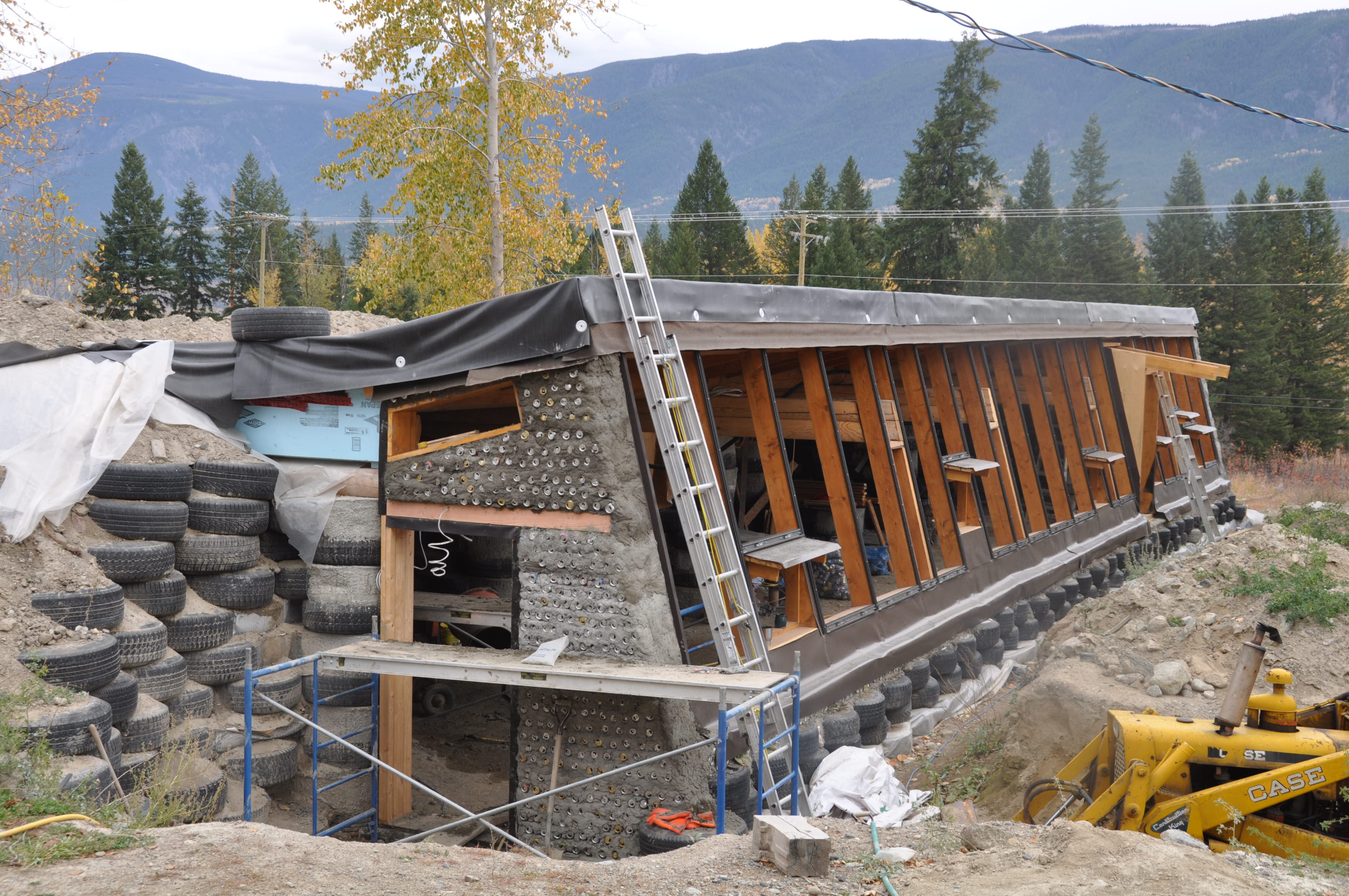
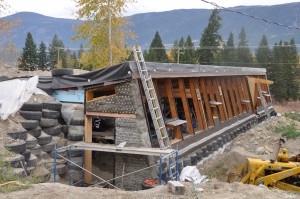 On Friday we finished the last of the pop can/concrete work on the west wall.
On Friday we finished the last of the pop can/concrete work on the west wall.
These walls are approximately 15″ thick; a double layer of rigid insulation (R24 total) sandwiched between an exterior and interior concrete/pop can wall. The concrete/pop can walls are simply concrete walls honeycombed with pop cans. The cans serve to reduce the amount of concrete used in the wall, reducing the cost and environmental impact of portland cement.
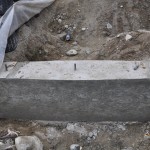 Back in the spring we poured concrete foundations for each of these walls. We dug the foundations 18″ below grade. They are 16″ wide and a total of 24″ deep (6″ above grade). We reinforced the foundation with a double run of 10mm rebar, and placed anchor bolts in the top of the pour so that we could bolt the door framing to the concrete. Our frost line here is closer to three feet deep. In order to prevent frost heaving of these foundations we insulated the exterior face of the foundations (R12 rigid insulation suitable for wet locations). The exterior insulation creates an FPSF (frost protected shallow foundation). Despite the fact that the footing is not below the frost line the insulation effectively raises the frost line at the perimeter of the building.
Back in the spring we poured concrete foundations for each of these walls. We dug the foundations 18″ below grade. They are 16″ wide and a total of 24″ deep (6″ above grade). We reinforced the foundation with a double run of 10mm rebar, and placed anchor bolts in the top of the pour so that we could bolt the door framing to the concrete. Our frost line here is closer to three feet deep. In order to prevent frost heaving of these foundations we insulated the exterior face of the foundations (R12 rigid insulation suitable for wet locations). The exterior insulation creates an FPSF (frost protected shallow foundation). Despite the fact that the footing is not below the frost line the insulation effectively raises the frost line at the perimeter of the building.
When we started the east wall back in the summer these side walls seemed fairly simple … they are only seven feet wide after all. We worked on the east wall in bits and pieces, using it as fill-in work when we were between other construction tasks so we did not really get an idea of how much time we spent on it.
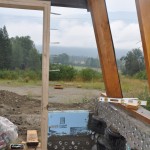 We started the west wall right after we ordered the windows and have been working on it since then … so we have a better idea of how much time and effort we spent. We built both walls essentially as described in Earthship Volume I. We started by framing the door opening. We (once again) glue-laminated 2×6 T&G decking to make 2×12 planks for this job. The door framing is a double layer of 2×12 laminated together, making for a pretty hefty door frame … I know where I will be standing in the unlikely event of an earthquake in the Kamloops region! The 2×12 width is required to support the 15″ thick concrete walls. We covered the framing on the exterior and concrete wall faces with 15# roofing felt as a moisture barrier. We then nailed stucco mesh on the concrete wall faces to give the concrete a rough surface to adhere to. Finally, we cut and placed a double layer of rigid insulation in the middle of the wall.
We started the west wall right after we ordered the windows and have been working on it since then … so we have a better idea of how much time and effort we spent. We built both walls essentially as described in Earthship Volume I. We started by framing the door opening. We (once again) glue-laminated 2×6 T&G decking to make 2×12 planks for this job. The door framing is a double layer of 2×12 laminated together, making for a pretty hefty door frame … I know where I will be standing in the unlikely event of an earthquake in the Kamloops region! The 2×12 width is required to support the 15″ thick concrete walls. We covered the framing on the exterior and concrete wall faces with 15# roofing felt as a moisture barrier. We then nailed stucco mesh on the concrete wall faces to give the concrete a rough surface to adhere to. Finally, we cut and placed a double layer of rigid insulation in the middle of the wall.
The concrete used for this job is a 3:1 mix of sand and portland cement. We tried to make a very stiff mix of concrete so that we could form the wall without the concrete mix simply slumping out of the wall cavity. We got better at this with practice … regardless of how stiff the concrete mix you can only place about 1-2′ of wall height before you have to stop and let the concrete set up. Note that the concrete will need longer to set up as the temperature drops … we pushed this in the last couple of days with temperatures close to freezing (that is to say I said lets keep going), and I found myself covered in concrete and pop cans. The concrete beneath my work area had not set, and all of it slid out of the wall. Kind of disconcerting … you do not expect an apparently solid wall to fall apart.
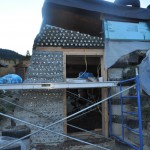 Once we got above the doorways we roughed in electrical wiring for interior and exterior lights at the doors, and we framed in a window above the door. The window frame is shaped and placed so that it will be above the small roof we plan to place over the door to protect the entry from rain and snow.
Once we got above the doorways we roughed in electrical wiring for interior and exterior lights at the doors, and we framed in a window above the door. The window frame is shaped and placed so that it will be above the small roof we plan to place over the door to protect the entry from rain and snow.
The concrete work is labour and time intensive; you spend a lot of time mixing and placing concrete, and waiting for things to dry so you can keep going. We filled in the waiting time with other small jobs. I would guess that the concrete work took us the better part of a week.
Eventually, we plan to add an entryway ‘air lock’ on the west side of the building as we see this door being used a lot in the winter. This means that there will be a double door here to minimize loss of heat when entering and exiting the building.